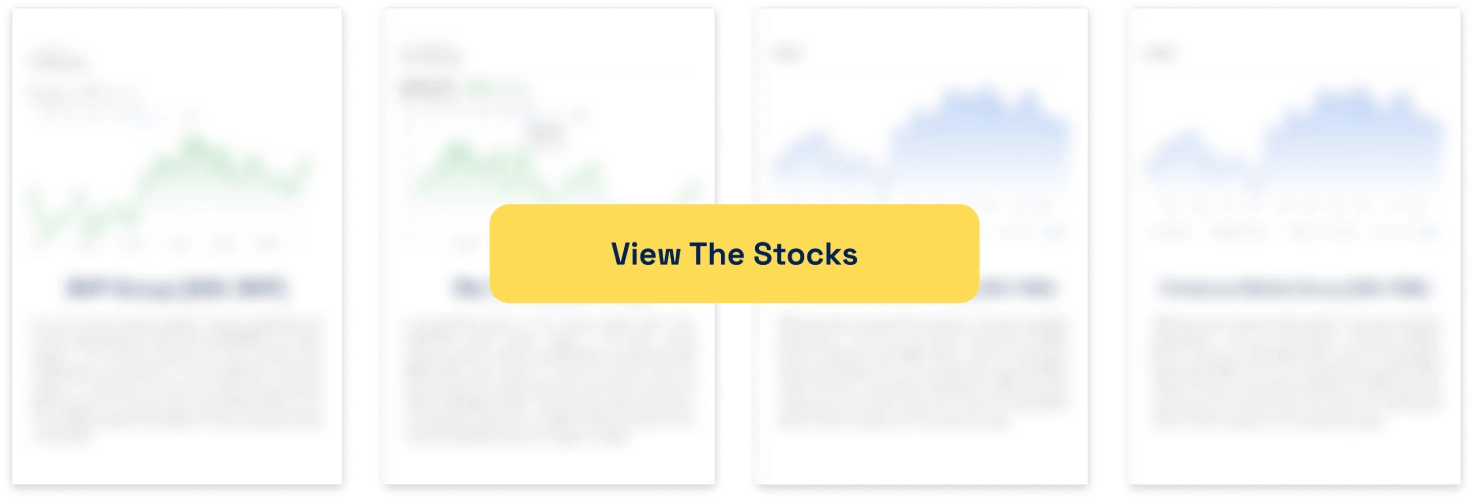Top Strategies for Trading CFDs on Forex: Tips for Beginners and Advanced Traders
![]() Ujjwal Maheshwari, November 11, 2025
Ujjwal Maheshwari, November 11, 2025
It is not the frontier that it used to be, but trading foreign exchange (FX) contracts in the form of a contract-for-difference (CFD) continues to reward those who combine discipline and creativity. Although the fundamental principles of margin, leverage, and bid-ask spreads remain unchanged, increased global regulation and faster data feeds have elevated the expectations for both novices and experienced traders. The following guide distills the most practical and currently relevant methods for navigating leveraged FX markets. Expect straight talk, no filler, and an emphasis on what genuinely works right now.
What are the Best Bank stocks to invest in right now?
Check our buy/sell tips
Understanding CFD Forex Trading in 2025
Before we immerse ourselves in the tactical scene, we would like to ground ourselves in the trading scene of this year. In the EU (ESMA), UK (FCA), and Australia (ASIC), the regulators limit retail leverage to between 30:1 on major pairs and 20:1 on minors, although professional accounts still use higher leverage. Many Forex brokers with CFD have supplemented these limits with real-time margin alerts and mandatory negative-balance protection, welcome safeguards, but ones that tighten breathing space for aggressive sizing.
Two technological trends matter most:
- Zero-latency pricing feeds delivered via broker-side edge servers. If your VPS is more than 20 ms from your broker, you’re already behind the curve.
- AI-assisted analytics dashboards that overlay probability cones on the chart. They don’t replace human judgment, but they do cut reaction time when news hits.
With that backdrop, let’s walk through strategies that mesh with today’s environment.
Core Strategies That Stand the Test of Time
Although the trading tools and platforms are changing at a very high rate, there are only a few strategies that can provide dependable signals every year. What unites them is their focus on price structure, disciplined timing, and robust risk control rather than any single “magical” indicator.
Trend-Following With Adaptive Moving Averages
Trend-following sounds almost cliché until you realize how many traders still chase counter-trend fades and over-leverage themselves into oblivion. The modern twist is adaptive EMAs that lengthen or shorten based on volatility. For example, many traders now pair a 10-period hull moving average (HMA) with a 50-period adaptive EMA. When the HMA crosses above the EMA during a period of expanding average true range (ATR), that’s a high-probability signal, because price is moving fast in a clear direction.
Key takeaways:
- Let winning trades run. A partial trailing stop two ATRs behind the price often works better than a fixed pip stop.
- Avoid “death by whipsaw” by filtering entries with the directional movement index (DMI). Only take crossovers when ADX > 25.
- Expect fewer but larger wins; small, frequent profits aren’t this strategy’s goal.
Independent backtests published by several retail analytics portals show that adaptive EMA/HMA crossovers often outperform static moving-average setups, although actual returns vary widely with execution speed, spread costs, and trader discipline.
Range and Mean Reversion Inside Quiet Sessions
When London and New York desks wind down, majors like USD/JPY often consolidate in 20-40-pip boxes. Range trading thrives here:
- Plot the high and low of the prior four-hour candle during the Asian session.
- Fade moves that touch these extremes, but only if the RSI(14) is above 70 (short) or below 30 (long).
- Target the midline and trail the stop to break even quickly.
Slippage is minimal in these conditions, making this strategy beginner-friendly. That said, remember that a sudden macro headline can blow the range apart. Use a hard stop just outside the box – no exceptions.
Breakout Strategy Around Macro Events
Economic events, such as FOMC rate decisions or ECB press conferences, regularly cause surges of 50 to 150 pips. A textbook breakout method in 2025 looks like this:
- Pre-position: Draw support/resistance one hour before the event using the 15-minute chart.
- Set buy-stop and sell-stop five pips outside those levels; cancel the opposite order once one fills.
- Add a time stop, if the price hasn’t moved at least 15 pips in your favor within ten minutes, exit.
Modern brokers’ “volatility protection” may widen spreads during news, so widen stops proportionally. Even with that caveat, news breakouts remain one of the fastest ways to capture large moves when volatility spikes.
Advanced Edge Builders
Once you can execute the foundational tactics almost on autopilot, the next step is to layer in techniques that tilt probability even further in your favor. Think of these as “edge enhancers” rather than standalone systems; they shine brightest when combined with the core methods discussed above.
Multi-Time-Frame Confluence
Advanced traders stack the odds by requiring alignment across at least three time frames, for example, weekly, daily, and four-hour charts. If the weekly shows a clear uptrend, the daily prints a bullish flag, and the four-hour triggers a bullish breakout, you have what many algo desks call a triple-green signal.
The power of this approach lies in its filtering: it eliminates 80% of otherwise tempting but lower-probability trades. Yes, you’ll trade less. You’ll also sleep better.
Quantitative Filters and the Algo-Hybrid Approach
In 2025, retail platforms like MetaTrader 5 and cTrader will let you plug Python libraries directly into your terminal. Quant-minded traders now run rolling Sharpe ratios or Monte-Carlo simulations in the background while discretionary trading. A simple but effective filter:
![]()
Only take trades when your rolling 50-trade score is above 0.5. This metric forces you to skip setups when your edge is statistically cold.
Smart Hedging With Correlated Pairs
Hedging in CFDs often gets a bad rap because of extra spread costs, but when done selectively, it mutes tail-risk. Example:
- Long EUR/USD on a trend signal.
- Short AUD/USD at half the size if both pairs have a 0.80 + positive correlation and the dollar side of the trade is the main driver.
This pair-in-pair hedge caps overall dollar exposure. Options on CME micro futures can provide an additional layer, but even a simple correlated pair hedge cuts overnight gap risk dramatically.
Risk Management – The Real Secret Sauce
Trading success ultimately hinges less on brilliant entries and more on how you size, hedge, and exit positions. The tactics below prioritize capital preservation so that a string of bad trades never knocks you out of the game.
Position Sizing With Dynamic Leverage
“Never risk more than 2% per trade” is still solid advice, but leverage adds a hidden layer: effective leverage (EL), calculated as:

Many traders watch margin but forget EL. Aim to keep EL below 10:1 during normal conditions and 5:1 heading into major news. Brokers now display EL dashboards in the trade ticket – use them.
Using Micro Futures or Spot Options as Insurance
For accounts above roughly $25 000, combining CFDs with micro FX futures or OTC spot options is feasible. For instance, buy a cheap weekly EUR/USD put while holding long EUR/USD CFDs. Think of it as a premium you gladly pay for peace of mind, the same way homeowners insure their property. The cost knocks a bit off net profit, but it caps the downside to something you can quantify.
Practical Checklist Before You Click “Buy” or “Sell”
The following checklist serves as a final gatekeeper between analysis and execution. Read it aloud (or at least in your head) before committing real money; doing so can prevent most “obvious-in-hindsight” errors.
- Macro backdrop. Are you aware of today’s top-tier economic releases? A quick glance at an economic calendar avoids fatal surprises.
- Trend score or range environment. Is ATR expanding or contracting? Let that steer you toward breakout or mean-reversion tactics.
- Confluence factors. Do at least two time frames point the same way?
- Execution hygiene. Is your VPS latency under 20 ms? Are spreads within normal limits?
- Risk controls. Position size sets risk in dollars; stop-loss sets risk in pips. Confirm both.
- Exit plan. Target, trailing logic, and time-stop – write them down before entry.
- Mindset check. If you just took a big loss or win, take a walk. Emotional equilibrium beats “revenge trading” every time.
Tape this list to your monitor until you can recite it by heart.
Conclusion: Turning Knowledge Into Consistent Action
The best CFD Forex strategies do not involve secret signals and exotic algorithms. They revolve around eternal concepts, trade with the trend when the market is susceptible, exploit predictable ranges when the markets are asleep, and then jump on breakouts when the news wakes everybody up. Risk management, multi-time frame confirmation, and hedging make up the playbook that is flexible and resilient.
All the mentioned strategies require practice. Simulate demos, then proceed to small-scale live trades, and proceed to bigger trades when your statistics (not your intuition) are telling you that the edge exists. Respect leverage, follow performance metrics like a religion, and look small in front of the ever-critical market, and you not only can survive in the present FX CMD market – you will flourish.
Blog Categories
Get Our Top 5 ASX Stocks for FY26
Recent Posts
Webjet Sinks 22 Percent After Softer H1 Results and Weak Domestic Demand
Webjet Falls 22 Percent After H1 Revenue Dips and Domestic Flight Demand Softens Webjet (ASX: WJL) opened down 22 percent…
Javelin Minerals Jumps 2,900 Percent on Capital Consolidation
A Sharper Share Register Sets Javelin Minerals Up for Its Next Corporate Stage Javelin Minerals (ASX: JAV) surged an extraordinary…
Why Are Droneshield Shares Dropping and Should You Be Worried
DroneShield Selloff Tests Nerves, But Fundamentals Tell a Different Story DroneShield (ASX: DRO) experienced a sharp selloff this morning that…



